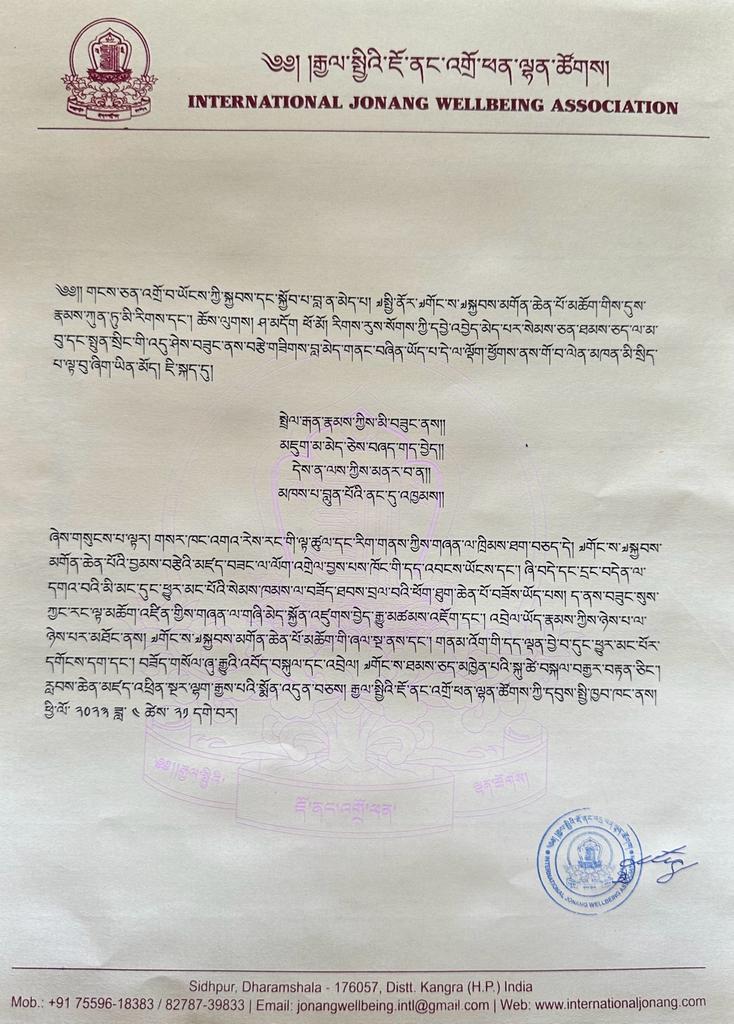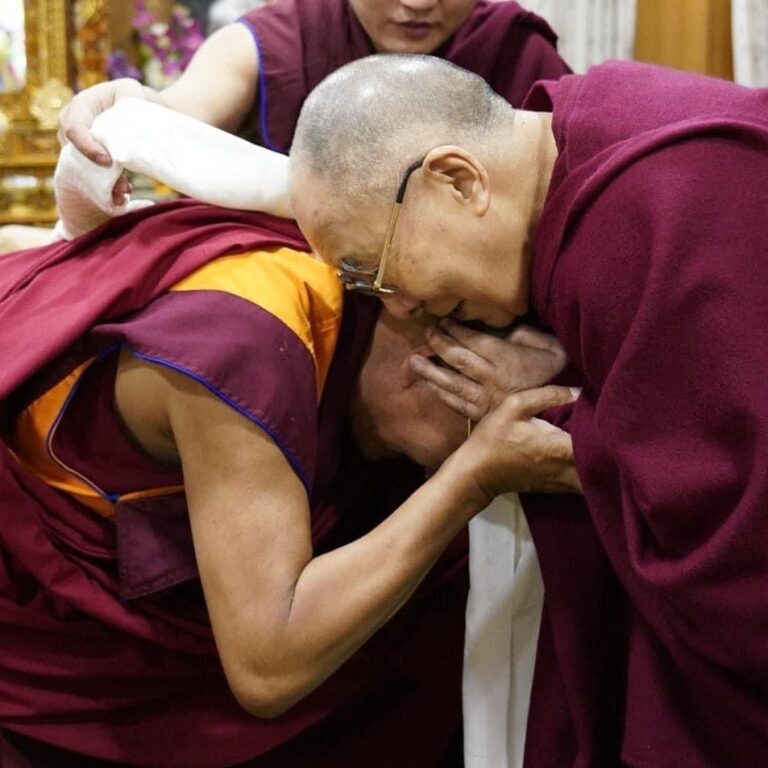A Work Telling the Life and Liberation Story of the Great Master Padmākara.
Part 15 The Master did not complete the pith instructions. The intended fire offering to secure the king’s lineage and increase his power was left unfinished. Nor did the Master complete the necessary third binding under of oath of the gods and nāgas. The Master could foresee the future, however, and therefore he taught his students many wrathful mantras and likewise hid them, and many profound teachings, in clay pots. His miraculously emanated forms concealed one hundred and eight great treasures of wealth and Dharma. Finally, he said: In this and all the lives to comeMay I and my ever-generous benefactors,Enjoy the fruits of Mahāyoga practiceIn Akaniṣṭha, the sublime and perfect realm. The Master gave advice to each and every student and then suddenly departed, taking the Rulak road. Leading a horse, he was escorted by two loyal ministers, Loté Gunagong and Shang Nyangtang, as far as Mangyul. Even then, however, a few ministers conspired, “That tantrika has great power. If we do not kill him now, he will surely cast a curse on Tibet.” Secretly, they sent eighteen fierce assassins on horseback in pursuit of the Master. As the Master arrived in Mangyul-Gungthang, he warned his escorts, “In the morning, we will encounter harm-doers.” The following day, when they reached the precipitous path at Dongbab, the eighteen assassins, weapons in hand, were about to strike when the Master suddenly made a mudrā and they froze—motionless as clay statues and unable to utter a single word. The Master went only that far with his escort. When the escort was about to return from that mountain pass, the Master said: Tibet’s evil hordes of demons, rākṣasas, gods, and nāgas needed to be tamed three times, but one round remains undone. Had I completed the task, the king would have a long life, the kingdom would become great, the king’s lineage would become ever more powerful and the Dharma would remain for a long time. I will remember what has been left undone. One cycle of teaching will be completed and then

